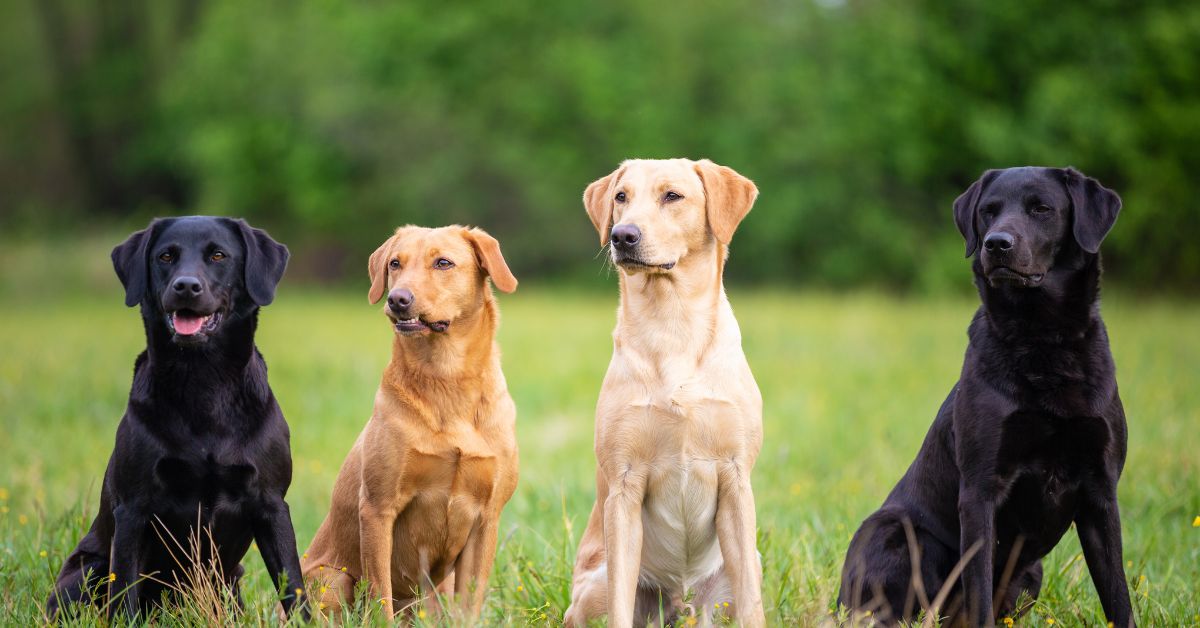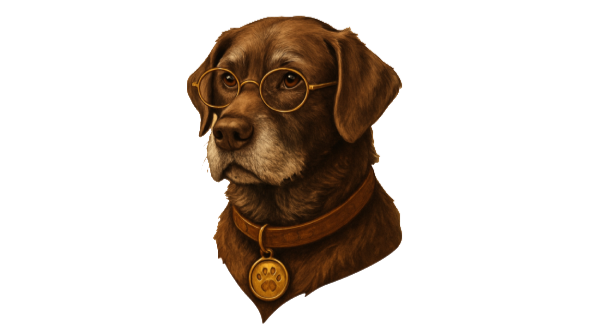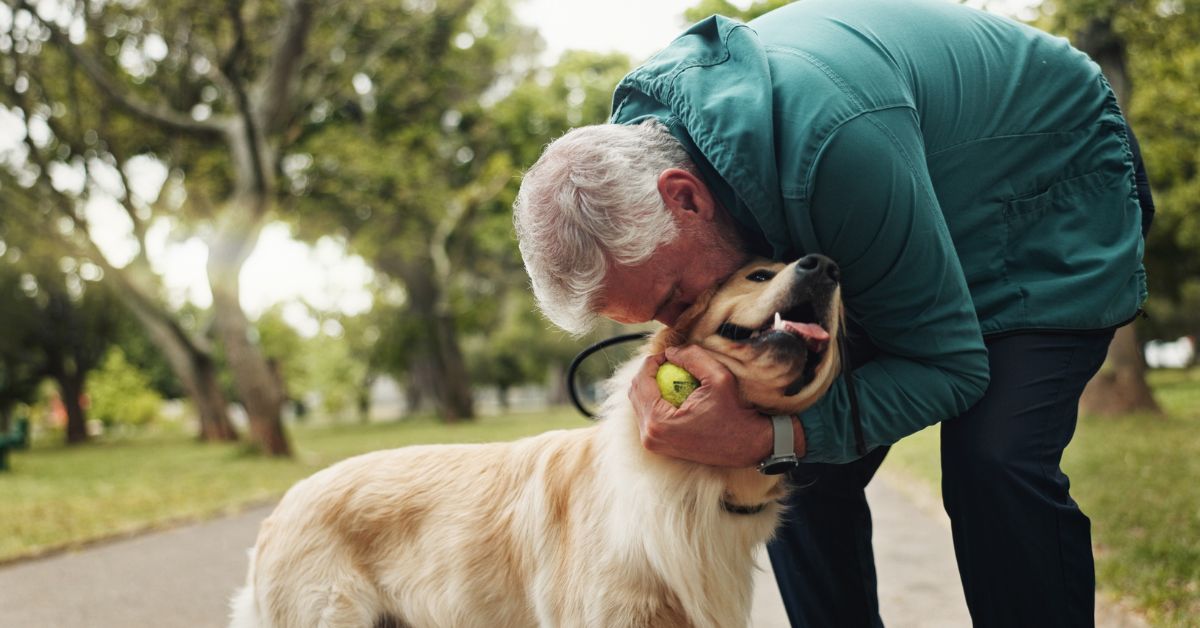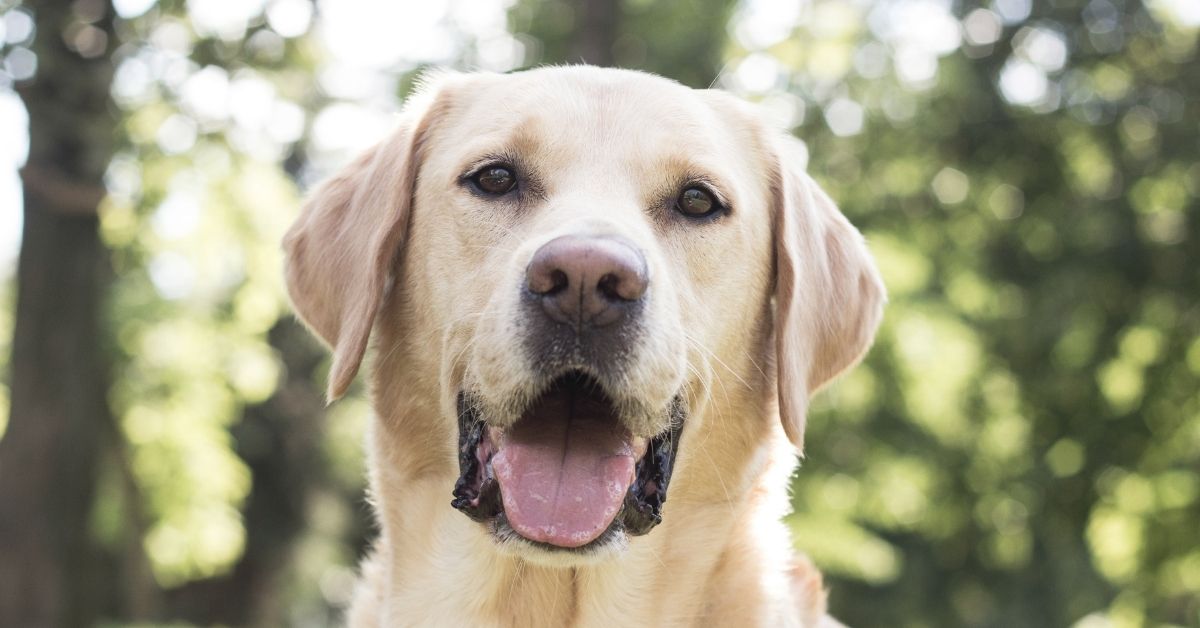
Origin of Labrador Retrievers: A Useful Breed History
Labrador Retrievers are beloved around the world for their unwavering loyalty, remarkable intelligence, and infectiously playful spirit that seems to transcend age and circumstance. They consistently rank as America's most popular dog breed according to American Kennel Club registration statistics, and they hold an especially cherished place in the hearts of countless families—particularly those who share their lives with a distinguished senior Lab enjoying their well-deserved golden years. But if you've ever wondered about the fascinating origins of this remarkable breed, you might be genuinely surprised to learn that the answer to "where did Labrador Retrievers come from" is not actually Labrador at all.
The story of the Labrador Retriever is a captivating tale that spans continents, involves maritime traditions, aristocratic breeding programs, and the gradual evolution of a working dog into one of the world's most cherished family companions. Understanding this rich history not only satisfies curiosity about our beloved Labs but also helps explain many of the breed characteristics that make them such exceptional partners in both work and family life.
This journey through time reveals how geography, human ingenuity, selective breeding, and the natural adaptability of these remarkable dogs combined to create the modern Labrador Retriever. From the harsh, cold waters of the North Atlantic to the refined estates of English nobility, and eventually to American homes across the continent, the Labrador's story is one of continuous adaptation while maintaining the core qualities that have made them irreplaceable companions for nearly two centuries.
The True Geographic Origins: Newfoundland's Maritime Heritage
The Island Setting That Shaped a Breed
Despite their name creating an obvious geographic assumption, Labrador Retrievers actually originated not in the Canadian province of Labrador, but rather on the nearby island of Newfoundland, approximately 300 miles southeast across the Strait of Belle Isle. This distinction is more than just a geographical curiosity—it's fundamental to understanding how the breed developed its unique characteristics and working abilities.
Newfoundland in the early 1800s was a harsh, unforgiving environment where survival depended on the successful harvest of the sea's bounty. The island's economy was built almost entirely on fishing, particularly cod fishing, which required boats to venture into the cold, often treacherous waters of the North Atlantic. It was in this challenging maritime environment that local fishermen began developing a breed of dog that would prove to be perfectly suited for water work and would eventually become the foundation for the modern Labrador Retriever.
The St. John's Water Dog: Foundation of Excellence
In the early 1800s, the resourceful fishermen of Newfoundland developed and refined a breed known as the St. John's Water Dog, named after the island's capital and largest port city. These remarkable dogs were the direct ancestors of the modern Labrador Retriever, and their development represents one of the most successful examples of purpose-driven dog breeding in history.
The St. John's Water Dog was bred specifically for the demanding work of supporting the fishing industry. These early retrievers performed multiple crucial functions that made them invaluable partners to the fishing crews. They helped fishermen by retrieving fish that had fallen off hooks or escaped from nets, fearlessly diving into icy Atlantic waters to recover valuable catch. They also assisted by pulling in fishing lines and nets, their strong swimming abilities and waterproof coats making them perfectly suited for prolonged work in harsh marine conditions.
Physical Adaptations for Maritime Work
The development of the St. John's Water Dog involved careful selection for specific physical traits that would prove essential for water work. Their short, dense double coats provided exceptional insulation against the frigid North Atlantic waters while also being water-repellent, allowing them to stay warm and buoyant during extended swimming sessions. This coat type, which remains characteristic of modern Labradors, was literally a matter of survival in the harsh Newfoundland climate.
These early dogs also developed the strong, muscular build that characterizes Labradors today. Their powerful hindquarters provided the propulsion needed for strong swimming, while their broad chests gave them excellent buoyancy and lung capacity for sustained water work. Their webbed feet, another trait that continues in modern Labs, made them exceptional swimmers and helped them navigate both rocky shores and icy waters with confidence and efficiency.
Temperament Shaped by Partnership
Perhaps most importantly, the St. John's Water Dog developed the gentle, cooperative temperament that makes Labradors such exceptional companions today. These dogs worked in close partnership with fishing crews, often in dangerous conditions where trust and communication between human and dog could mean the difference between life and death. Dogs that were aggressive, unpredictable, or difficult to control simply couldn't survive in this environment, leading to strong selective pressure for cooperative, intelligent, and gentle temperaments.
This working relationship also developed the breed's legendary eagerness to please and their remarkable trainability. Dogs that could quickly learn and respond to complex commands were more valuable to fishing crews and more likely to be bred, gradually establishing the intelligence and responsiveness that makes modern Labradors so successful in various working roles.
The Journey to England: Aristocratic Recognition and Breed Development
British Discovery of Newfoundland's Treasure
In the early 19th century, British nobles and merchants traveling to Newfoundland for business and trade began taking notice of these remarkable working dogs and their exceptional retrieving abilities. The island's strategic location and rich fishing grounds attracted numerous British visitors, many of whom were experienced hunters and dog enthusiasts who immediately recognized the potential of these hardy water dogs.
The timing of this discovery was particularly fortuitous, as the British sporting community was experiencing growing interest in organized hunting and field sports, creating demand for dogs with specialized retrieving abilities. The St. John's Water Dogs possessed exactly the combination of water skills, gentle mouths, and trainable temperaments that British hunters needed for waterfowl hunting and other sporting activities.
Influential Breeding Programs
Among the most influential early importers and breeders were several prominent British aristocratic families who would prove instrumental in developing the modern Labrador Retriever. The second Earl of Malmesbury, James Harris, began importing St. John's Water Dogs to England in the 1830s and is often credited with coining the term "Labrador" to describe these dogs, likely referencing the Labrador Sea that borders Newfoundland.
The Dukes of Buccleuch and Home also established significant breeding programs, working closely with the Earl of Malmesbury to refine and standardize the breed. These families had the resources, land, and expertise needed to conduct serious breeding programs, carefully selecting for the traits that would become characteristic of the modern Labrador Retriever.
Systematic Breed Development
These British breeding programs represented a significant evolution from the more practical, work-focused breeding that had occurred in Newfoundland. While maintaining the essential working abilities that made the St. John's Water Dog so valuable, British breeders began implementing more systematic approaches to breeding that focused on consistency, standardization, and refinement of specific traits.
English breeders worked meticulously to preserve and enhance the breed's water-repelling coat, ensuring that the dense double coat remained functional while also becoming more uniform in texture and appearance. They carefully maintained the strong, athletic build that made these dogs such capable swimmers and workers, while also refining their proportions and movement to create a more elegant and consistent appearance.
The gentle temperament that had been essential for working partnerships with fishermen was not only preserved but actively enhanced through careful selection. British breeders recognized that these dogs needed to work closely with hunters and gamekeepers, requiring even more refined control and responsiveness than their maritime ancestors had demonstrated.
Official Recognition and Standardization
The careful work of these British breeding programs culminated in official recognition when the British Kennel Club formally recognized the Labrador Retriever as a distinct breed in 1903. This recognition represented the culmination of nearly a century of selective breeding and refinement, establishing breed standards that would guide Labrador breeding programs around the world.
The breed standard established by the British Kennel Club codified the physical and temperamental characteristics that had been developing through decades of careful breeding. This standardization was crucial for maintaining breed consistency as Labradors spread to other countries and breeding programs expanded globally.
Arrival and Rise in America: From Working Dogs to Family Treasures
Early American Introduction
Labradors made their historic arrival in the United States in the early 1900s, brought by American hunters, dog enthusiasts, and wealthy sportsmen who had encountered the breed during travels to England or through connections with British breeding programs. The timing of this introduction coincided with growing American interest in organized hunting, field trials, and purebred dog ownership, creating an ideal environment for the breed to flourish.
American Hunting Traditions
American hunters and outdoorsmen quickly recognized that Labradors were exceptionally well-suited to American hunting conditions and game birds. The breed's water skills made them perfect for waterfowl hunting in the diverse aquatic environments found across the United States, from the Great Lakes to coastal marshlands to interior river systems.
American field trial enthusiasts were particularly impressed with the breed's combination of natural ability, trainability, and desire to work. Unlike some European hunting dogs that had been bred primarily for specific regional conditions, Labradors proved remarkably adaptable to the varied hunting conditions found across America's diverse landscape.
Versatility Beyond Hunting
While hunting remained an important application for Labradors in America, the breed's exceptional temperament and intelligence quickly led to their adoption for other roles. Their gentle nature and eagerness to please made them outstanding family pets, while their intelligence and trainability opened doors to service work, therapy work, and other specialized applications.
American dog lovers discovered what Newfoundland fishermen and British aristocrats had already learned: Labradors possessed a rare combination of working ability and companionship qualities that made them exceptional partners in multiple contexts. This versatility would prove crucial to their eventual rise to the top of American breed popularity rankings.
The Path to Popularity
The growth of Labrador popularity in America was gradual but steady throughout the early and mid-20th century. World War II actually helped accelerate breed recognition, as Labradors proved valuable in military applications and many servicemen returned home with appreciation for the breed's capabilities and temperament.
By the 1970s, the Labrador Retriever had gained enormous popularity throughout the United States, appealing to families, hunters, and working dog enthusiasts alike. Their reputation for being excellent with children, combined with their loyalty and relatively easy care requirements, made them ideal family pets for America's growing suburban population.
Achieving and Maintaining Top Status
In 1991, a milestone was reached when the Labrador Retriever became the most registered dog breed with the American Kennel Club, surpassing previous leaders and claiming a title they have held continuously ever since. This achievement reflected not just a temporary trend but a fundamental recognition of the breed's exceptional suitability for American lifestyles and values.
The factors contributing to this sustained popularity include the breed's adaptability to various living situations, their excellent reputation with children and families, their success in various working roles, and their relatively predictable temperament and care requirements. Learn more about the breed's continued recognition and standards at the American Kennel Club – Labrador Retriever website.
Understanding Why the Breed Continues to Thrive
Fundamental Breed Characteristics
Labradors didn't achieve and maintain their popularity through accident or fashion—they possess a unique combination of qualities that make them ideally suited for modern life while retaining the working abilities that originally made them valuable. Understanding these characteristics helps explain why Labradors continue to excel in so many different roles and environments.
Social Nature and Family Integration
Friendly and Social temperaments make Labs naturally inclined to love people and integrate successfully with diverse family structures. They typically get along exceptionally well with children of all ages, often displaying remarkable patience with young children while also being robust enough to handle the energy and activity levels of older kids.
Their social nature extends beyond humans to include other dogs and even cats, making them excellent choices for multi-pet households. This sociability stems from their working heritage, where cooperation and peaceful coexistence with other animals and people was essential for successful work environments.
Intelligence and Trainability
Highly trainable intelligence combined with an eager-to-please attitude makes Labs ideal candidates for obedience training, service work, and specialized applications. Their intelligence is particularly suited to learning complex tasks and retaining training over long periods, while their motivation to please their human partners makes the training process more enjoyable and successful for both dog and trainer.
This trainability has made Labradors the breed of choice for many service applications, including guide dogs for the blind, therapy dogs, detection work, and search and rescue operations. Their ability to learn and retain complex tasks while maintaining their gentle temperament makes them uniquely qualified for work that requires both technical skill and emotional sensitivity.
Physical Capabilities and Energy
Active and energetic natures ensure that Labs can keep up with active families and working demands, while their robust constitution makes them suitable for various climates and living conditions. While energy levels naturally moderate with age, Labs typically retain a playful nature and enthusiasm for activities well into their senior years.
This energy level, combined with their athletic build, makes them excellent companions for hiking, swimming, running, and other outdoor activities. Their endurance and enthusiasm for physical activity reflects their working heritage and helps explain their continued success in various sporting and working applications.
Temperamental Stability
Gentle, patient temperaments have made Labs wonderful dogs for families with young children, elderly members, or individuals with special needs. Their emotional stability and predictable reactions make them safe and reliable companions in situations that might challenge other breeds.
This temperamental stability also contributes to their success in working roles where emotional consistency is crucial. Whether serving as therapy dogs in hospitals, working as service animals, or simply being reliable family pets, Labs demonstrate remarkable emotional resilience and stability.
The Evolution of Roles: From Working Dogs to Modern Companions
Traditional Working Applications
While modern Labradors are perhaps best known as family pets, the breed continues to excel in various working roles that utilize their original capabilities. Waterfowl hunting remains a primary application, with Labs continuing to demonstrate the water skills and retrieving abilities that made their ancestors so valuable to Newfoundland fishermen.
Field trial competition provides a formal venue for demonstrating and preserving these working abilities, ensuring that the breed's hunting instincts and trainability remain strong even as more Labs live primarily as family companions.
The breed's intelligence, trainability, and gentle temperament have made them the preferred choice for many modern service applications. Guide dogs for the blind, hearing dogs for the deaf, mobility assistance dogs, and emotional support animals frequently come from Labrador breeding programs specifically designed to produce dogs suitable for these demanding roles.
Detection work represents another important application, with Labs serving in drug detection, explosive detection, agricultural inspection, and search and rescue operations. Their excellent scenting abilities, inherited from their hunting heritage, combined with their trainability and work ethic, make them exceptional detection dogs.
Therapeutic and Emotional Support Roles
The emotional intelligence and gentle nature that made Labradors such good working partners have also made them outstanding therapy dogs. They serve in hospitals, nursing homes, schools, and disaster relief situations, providing comfort and emotional support to people in various challenging circumstances.
Their ability to read human emotions and respond appropriately, combined with their patient and gentle nature, makes them particularly effective in these therapeutic roles. Many senior Labs continue to serve in therapy work well into their golden years, as their calm, settled temperament often makes them even more effective in these roles.
The Senior Labrador Retriever's Continuing Legacy
Aging with Grace and Purpose
As Labradors transition into their senior years, typically around age 7-8, they continue to embody the fundamental characteristics that have made the breed so beloved throughout history. Senior Labradors may experience natural slowing in their physical capabilities, but their hearts remain just as devoted and their desire to please just as strong as ever.
The patience and wisdom that often come with age can actually enhance certain aspects of the Labrador temperament. Many senior Labs become even more attuned to their family's emotional needs, more selective in their energy expenditure, and more focused on the relationships and activities that bring them the greatest satisfaction.
Adapting Roles for Senior Years
Understanding the history and working heritage of Labradors helps senior dog parents appreciate how to adapt activities and expectations for their aging companions. The same intelligence that made young Labs excellent working dogs can be channeled into gentler activities like scent work, puzzle games, and modified training exercises that provide mental stimulation without physical stress.
The social nature that has always characterized the breed often becomes even more pronounced in senior years, as older Labs frequently seek increased companionship and may become more selective about the activities they choose to engage in fully.
Honoring the Heritage
Caring for a senior Labrador provides an opportunity to honor the breed's remarkable heritage while adapting care to meet their changing needs. The same loyalty and devotion that made their ancestors such valuable working partners deserves to be met with thoughtful care, appropriate activities, and recognition of their continued value as family members.
That's why resources like Wagging Through the Years exist—to provide dedicated support, stories, and guidance for Lab lovers who treasure these golden years and want to ensure their senior companions receive the care and recognition they deserve.
Celebrating Individual Senior Labs
Creating Lasting Tributes
You can celebrate your own senior Lab's place in this remarkable breed history by submitting a photo to our Golden Years Gallery. This beautiful tribute allows you to honor not only their individual story but also their connection to the centuries-long heritage of Labrador Retrievers who have served, worked, and loved alongside humans.
Each senior Lab represents a living link to the hardy St. John's Water Dogs who worked the cold Atlantic waters, the refined hunting dogs of British estates, and the beloved family companions who have shared American homes for over a century. Their gray muzzles and wise eyes carry forward the legacy of their remarkable breed.
Understanding the Connection
When you look into the eyes of your senior Labrador, you're seeing not just your beloved companion but a representative of one of the most successful human-canine partnerships in history. The loyalty, intelligence, and gentle spirit that you cherish in your individual dog represents the culmination of nearly two centuries of careful breeding and selection for these exact qualities.
Modern Breed Considerations and Future Outlook
Maintaining Breed Quality
As Labradors have become increasingly popular, responsible breeding practices become even more important for maintaining the health, temperament, and working abilities that have made the breed so successful. Understanding the breed's history helps potential Lab owners appreciate the importance of supporting breeding programs that prioritize health testing, temperament evaluation, and preservation of working abilities.
Health and Longevity Considerations
Modern veterinary understanding and improved nutrition have extended the typical lifespan of Labradors beyond what their working ancestors might have experienced. This increased longevity means that the senior years represent a larger portion of a Lab's life, making senior care knowledge and resources increasingly important for Lab owners.
The breed's history of hard work and physical demands also informs modern understanding of common health issues in senior Labs, including joint problems, eye conditions, and other age-related concerns that can be managed with appropriate care and veterinary support.
Preserving Working Heritage
While most modern Labs live primarily as companions rather than working dogs, efforts to preserve their working heritage through field trials, hunting, and other working applications help ensure that the breed maintains the physical and mental capabilities that have defined them throughout their history.
Conclusion: A Legacy of Love, Loyalty, and Service
So the next time you look into the eyes of a Labrador Retriever—whether a energetic youngster or a distinguished senior—remember that their remarkable journey began on the chilly, unforgiving shores of Newfoundland nearly two centuries ago. These dogs started as hardworking water dogs with hearts of gold, bred by practical fishermen who needed reliable partners in dangerous, demanding work.
Their story continued through the refined estates of British nobility, where their natural abilities were carefully preserved and enhanced through generations of thoughtful breeding. The journey culminated in American homes and hearts, where Labradors found their ultimate calling as beloved family members who excel in countless roles while never losing their fundamental character.
The legacy of the Labrador Retriever is truly one of unwavering loyalty, remarkable resilience, and unconditional love—qualities that only seem to grow stronger and more precious as these remarkable dogs age gracefully in our care. Every senior Lab carries forward this incredible heritage, representing not just their individual story but the continuation of one of the most successful and beloved breed histories in the canine world.
Understanding this rich history helps us appreciate not just what our Labradors do for us today, but what they represent in the larger story of human-canine partnership. From the working docks of Newfoundland to the comfortable living rooms where senior Labs spend their golden years, the breed's story is fundamentally about the enduring bond between humans and dogs who choose to work, live, and love together.
Their heritage reminds us that the gray muzzles and slower steps of our senior Labs represent not decline, but the culmination of a lifetime spent embodying the very best qualities of one of history's most remarkable breeds. In caring for our senior Labradors, we honor not just our individual companions but the entire legacy of this extraordinary breed that has given so much to humanity for nearly two centuries.
Explore more stories like this in our full archive: Wagging Through the Years. Every Labrador has a story — thank you for sharing yours with us.
📸 Photo Credits: Featured images in this article are licensed from Shutterstock



